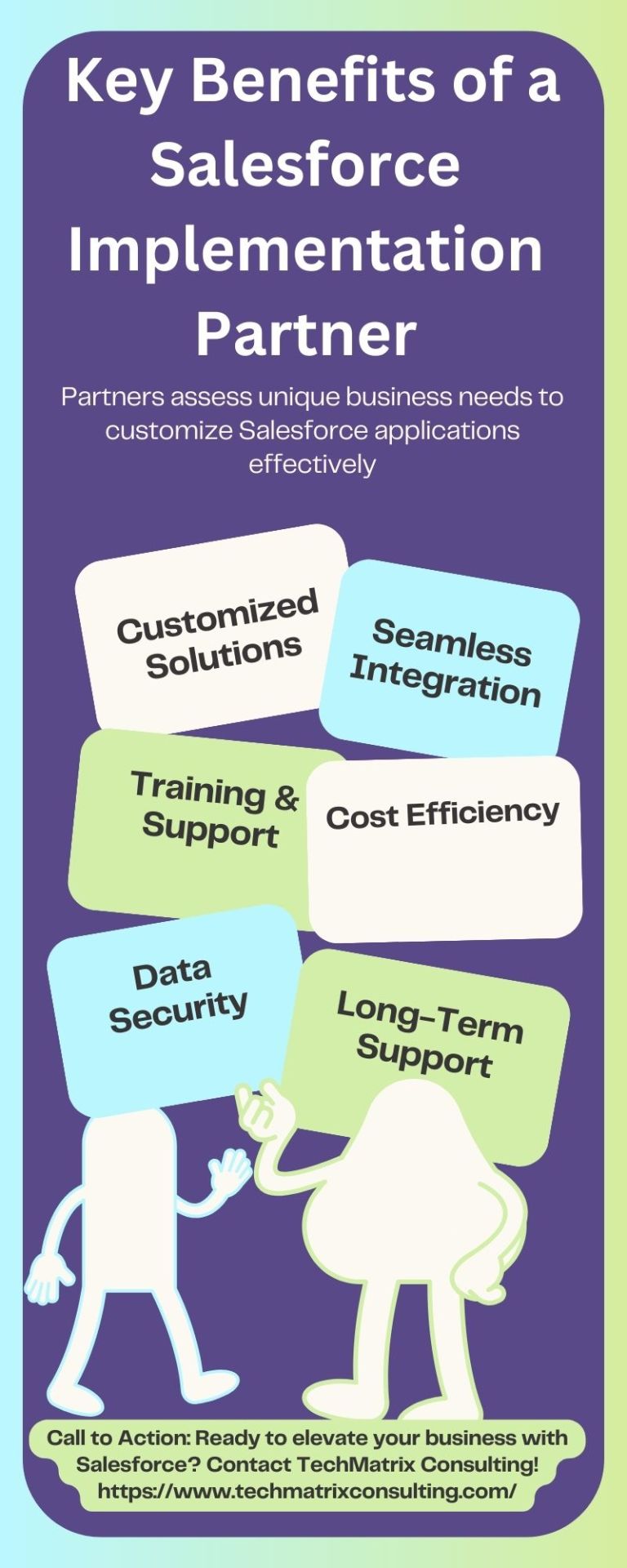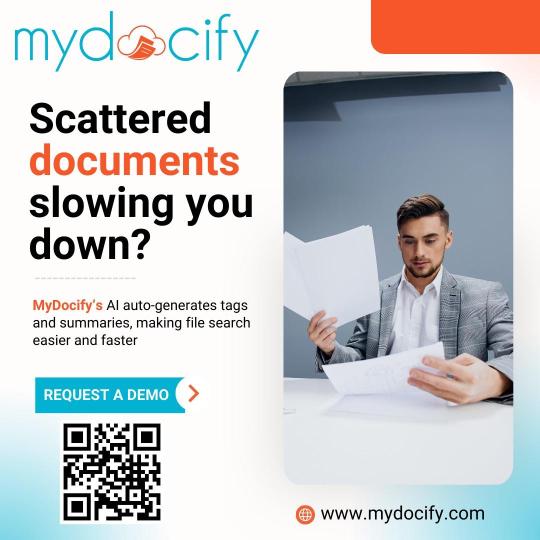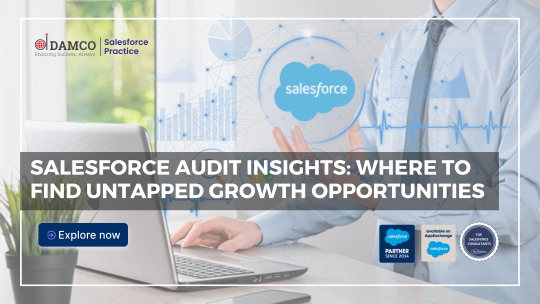#salesforce security
Explore tagged Tumblr posts
Text
Examine how Salesforce is helping organizations reduce their carbon footprint with sustainable technology solutions.
As businesses worldwide embrace sustainability in 2025, the pressure to reduce their environmental impact while maintaining operational efficiency has never been higher. Salesforce, a global leader in cloud technology, is at the forefront of helping organizations meet their sustainability goals. Through its innovative solutions, Salesforce enables businesses to leverage technology to not only enhance customer relationships but also contribute to reducing their carbon footprint. Here’s how Salesforce is leading the charge in sustainability:
Leveraging Salesforce’s Cloud Solutions for Sustainable Practices
Salesforce’s cloud platforms, such as Salesforce Marketing Cloud and Salesforce Sales Cloud, are designed to streamline operations and improve efficiency. By using these tools, organizations can reduce waste and minimize their energy consumption. For instance, the Salesforce Marketing Cloud helps businesses deliver targeted campaigns, reducing the need for print materials and cutting down on paper waste. The Salesforce Sales Cloud enables businesses to track and optimize sales workflows digitally, reducing reliance on physical resources like paper and office supplies.
The Role of Salesforce’s Sustainable Technology Features
Salesforce is committed to making its products environmentally friendly and helping businesses do the same. For example, Salesforce’s sustainability solutions provide businesses with insights into their energy consumption and help optimize resource allocation. The Salesforce security model, which ensures the protection of sensitive data, also extends to its green initiatives by ensuring that companies adopting sustainable practices do so with confidence and security.
Salesforce and the Importance of Sustainability Certifications
Another critical aspect of Salesforce's role in promoting sustainability is its focus on certifications. Salesforce has integrated sustainability metrics into its certification programs, enabling professionals and businesses to track their carbon footprint reduction efforts. For those pursuing a Salesforce certification security, understanding how the company’s cloud infrastructure contributes to sustainability is key. This knowledge helps organizations align their technology implementation with their sustainability objectives while maintaining high standards of security and compliance.
Salesforce as a Partner for Sustainable Growth
Working with a trusted Salesforce implementation partner is crucial for businesses looking to transition to more sustainable practices. By collaborating with experienced partners, organizations can ensure that Salesforce solutions, like the Salesforce Marketing Cloud and Salesforce Sales Cloud, are tailored to meet their specific environmental goals. These partnerships empower businesses to drive impactful change, reduce waste, and lower their overall carbon emissions.
Latest Updates in Salesforce Sustainability Initiatives
As of 2025, Salesforce has ramped up its sustainability efforts with new features and tools that allow companies to measure and manage their environmental impact more effectively. With integrated sustainability tracking and reporting, organizations can now see how their technology investments contribute to reducing their carbon footprint in real-time.
In conclusion, Salesforce is not just about customer relationship management but also about empowering businesses to make a positive environmental impact. By leveraging Salesforce's cloud solutions and working with certified Salesforce implementation partners, organizations can create a sustainable future while maintaining the security and efficiency of their operations.
0 notes
Text

Summer Internship Program 2024
For More Details Visit Our Website - internship.learnandbuild.in
#machine learning#programming#python#linux#data science#data scientist#frontend web development#backend web development#salesforce admin#salesforce development#cloud AI with AWS#Internet of things & AI#Cyber security#Mobile App Development using flutter#data structures & algorithms#java core#python programming#summer internship program#summer internship program 2024
2 notes
·
View notes
Text
#salesforce#salesforce cloud#CRM#CRM platform#customer service#Features of Salesforce#manage customer interactions#Service Cloud#Marketing Cloud#Commerce Cloud#Einstein AI#Analytics Cloud#Community Cloud#Mobile App#Operational Efficiency#Scalability#Security
0 notes
Text
Salesforce Security: Advanced Strategies Unlocked
youtube
0 notes
Text
Learn effective Salesforce backup strategies to protect your business data and ensure seamless recovery in case of data loss.
#Salesforce backup#data recovery guide#Salesforce strategies#secure business data#Salesforce data protection
0 notes
Text

Discover the benefits of working with a certified Salesforce Implementation Partner. From tailored solutions and seamless integration to enhanced data security and scalability, learn how partnering with experts like TechMatrix Consulting can drive your business success. With global experience, 500+ projects, and a dedicated team, TechMatrix ensures smooth implementation and long-term support for your Salesforce needs.
#Salesforce Implementation Partner#certified Salesforce partner#Salesforce consulting services#TechMatrix Consulting Salesforce#Salesforce integration#benefits of Salesforce partner#Salesforce expert support#Salesforce solutions provider#Salesforce CRM implementation#Salesforce consulting firm#choosing Salesforce partner#top Salesforce partners#Salesforce partner benefits#Salesforce data security#Salesforce scalability
0 notes
Text

Mydocify - Streamlined Document Management Software for Businesses
Mydocify is a powerful document management software that helps businesses efficiently organize, store, and retrieve files. Experience seamless document collaboration, version control, and enhanced security with Mydocify’s cloud-based solution.
#document management software#salesforce document management#Document Workflow#Secure and Efficient File Organization#marketing#branding
0 notes
Text
Salesforce Marketing Cloud Solutions for Any Size Business
Whether running a small business or managing a larger enterprise, the Salesforce Marketing Cloud has something in store for you. The powerful platform was designed to help businesses of all sizes easily connect with their customers through personalized marketing interactions at scale. Offering tools for social media, email, advertising, and customer engagement, the Marketing Cloud allows you to…
#Customer Journey Mapping#Email Marketing Automation#Lead Scoring and Nurturing Salesforce#Marketing Cloud#Marketing Cloud AI#marketing cloud for enterprise#Marketing Cloud for Small Business#marketing cloud for smb#Marketing Cloud Personalization#Marketing Cloud Security Compliance#Marketing for Medium Sized Enterprises#Salesforce AI#Salesforce blog#Salesforce Marketing Cloud Solutions for Any Size Business#sfdc fan boy#sfdcFanBoy
0 notes
Text
Top 5 Customer Identity And Access Management Software Of 2024

You see, CIAM or Customer Identity & Access Management, functions much like the Sorting Hat. It examines an individual's identity against their unique credentials stored in a database, ensuring the person is who they claim to be (no Polyjuice Potion here!) and keeping impostors out of the system.
CIAM Software also categorizes users into their appropriate "house" (access level) based on their roles, preferences, and previous interactions. However, unlike the Sorting Hat, CIAM Software continually monitors user journeys, adjusting permissions as needed to ensure the right people access the right resources at the right times, while keeping out impostors.
So, read on for the top 5 Customer Identity And Access Management Software of 2024!
Customer Identity And Access Management (CIAM) is a security strategy that allows organizations to securely manage their customers’ identities to control their access to applications, portals, and services. CIAM solutions offer a digital security layer in customer interactions, empowering users to secure their identities and data while managing their security preferences.
Customer Identity And Access Management (CIAM) Software simplifies this approach by streamlining the sign-up and log-in process for online applications and services. This helps in protecting data privacy, defending against identity theft and other types of fraud, as well as managing account profiles and security settings. Moreover, the solution helps businesses improve the customer experience while complying with data privacy mandates such as the GDPR.
Last year, we covered the top CIAM solutions of 2023. To find out about this year's top options, read on and explore the top 5 Customer Identity And Access Management Software of 2024!
Top 5 Customer Identity And Access Management (CIAM) Software Of 2024
CIAM Software provides businesses with features such as customer registration, self-service account management, consent and preference management, single sign-on (SSO), multi-factor authentication (MFA), access management, data access governance, identity proofing, identity orchestration, fraud mitigation, and more, to deliver seamless and secure customer experiences. Pretty cool, right?
So, here are the top 5 Customer Identity And Access Management Software of 2024 – in no particular order!
Tool 1: WSO2 Identity Server
Founded in August 2005 and headquartered in Mountain View, California, United States, WSO2 began as an open-source middleware company and now offers suites for application development, SaaS, and IAM solutions. With over 900 employees, serving major clients such as Nutanix, Jaguar, Vodafone, Honda, and Cisco, WSO2 has secured over 1 billion identities. The company has also won several awards, including being named a Customers’ Choice in the Gartner Peer Insights Voice of the Customer report in 2023. Pretty cool, WSO2!
WSO2 Identity Server, new to our list, excels in customer identity and access management with its open-source platform that helps secure applications for individuals, enterprise customers, citizens, and more. It offers robust features such as single sign-on (SSO), multifactor authentication (MFA), and identity federation to ensure seamless, secure, and streamlined user experiences. The platform also offers scalable features for passwordless logins, data privacy compliance, enterprise SSO, role-based access management, and contextual authentication.
Moreover, WSO2 Identity Server provides a wide range of APIs and SDKs to help businesses develop custom deployments that easily integrate with existing systems. This solution is compatible with cloud-based IDaaS, on-premises, or private cloud and comes in three variants – B2B, B2C, and G2C – enabling secure identity and access management for diverse customer sets. WSO2 can easily help organizations optimize customer data security, leading to more engaging experiences!
Tool 2: IBM Security Verify
Who hasn’t heard of IBM? Founded in 1911 and headquartered in Armonk, New York, United States, IBM employs roughly 300,000 people globally, serving major clients such as Apple, NASA, Ford, and Cisco. IBM has received numerous industry accolades, including winning 16 awards from Comparably in 2023, ranging from Best Company for Diversity to Happiest Employees. Impressive, IBM!
IBM Security Verify, making its debut on our list, is notable for its advanced security and AI-driven features for customer identity and access management. The CIAM solution offers adaptive authentication, identity analytics, and risk-based access control to ensure customer data is always protected. Moreover, IBM Security Verify creates a consistent, frictionless authentication experience across all business applications, ensuring customers have a smooth experience at every touchpoint.
With robust integration capabilities that support diverse environments, spanning cloud, on-premises, and hybrid infrastructures, IBM Security Verify helps build an enterprise-wide identity fabric that eliminates identity silos. Further, AI-driven analytics provide real-time threat detection based on users’ behaviors and biometrics to help protect from identity-based attacks such as Account Takeover (ATO). IBM Security Verify also enhances the overall security posture, offers a user-friendly interface, and comprehensive reporting tools to efficiently manage and monitor access policies.
Tool 3: Frontegg
Frontegg, an end-to-end user management solutions provider, was founded in 2019. With a modest team of fewer than 100 employees and headquarters in Tel Aviv, Israel, Frontegg serves clients such as Talon, Siemens, Cider, and Vial. It has received several recognitions, including winning the Best Software Award for Security Products category by G2 in 2023. Always at the front, Frontegg!
Frontegg, making its second consecutive appearance on our list, distinguishes itself in the CIAM space with a developer-centric platform featuring comprehensive user management capabilities. Besides seamless integration and rapid deployment, Frontegg offers extensive features such as social login, SSO, MFA, APIs, and open-source SDKs, providing businesses with everything they need to ensure a secure and frictionless user experience.
Frontegg’s user-friendly interface enables developers to quickly customize and integrate identity and access management features into their applications. Its modular architecture allows businesses to tailor, modify, and scale their CIAM capabilities as needed. With real-time monitoring and analytics, Frontegg provides actionable insights for authentication, authorization, security management, and observability, leading to comprehensive IAM coverage. No wonder Frontegg is a popular choice for organizations looking to enhance their customer data management!
Tool 4: Salesforce Platform
Salesforce, a leading cloud software company, was founded in 1999 and is headquartered in San Francisco, California, United States. Employing roughly 80,000 people globally, Salesforce serves major brands such as Amazon, Adidas, Coca-Cola, Walmart Inc., and more. The company has won several accolades, being ranked as the #1 CRM provider by IDC in the 2024 Worldwide Semiannual Software Tracker for the 11th consecutive time. How cool is that!
Salesforce Platform, new to our list, boasts CIAM capabilities integrated into its popular CRM ecosystem, offering a seamless and secure user experience. Key CIAM features include single sign-on, MFA, identity federation, and user lifecycle management, ensuring comprehensive management of user identity and access. Its integration with Salesforce CRM provides a unified view of customer data, access levels, roles, and more, enhancing context-based security capabilities.
The scalable architecture supports large-scale deployments, securing identities for employees, partners, and customers from a unified solution. Its intuitive user interface simplifies managing access policies and integrating third-party applications. Additionally, Salesforce’s advanced analytics and reporting tools provide deep insights into user behavior across the ecosystem, helping organizations optimize their identity management and security strategies.
Tool 5: Okta Customer Identity
Founded in 2009 and headquartered in San Francisco, California, United States, Okta employs over 5,800 people, serving clients such as Apple, Mitsubishi Heavy Industries, MGM Resorts International, and Albertsons. Okta has won several awards and recognitions, most recently being named the Google Cloud Technology Partner of the Year for Productivity and Collaboration in 2024. That’s pretty sweet, Okta!
Okta Customer Identity, making its first appearance on our list, offers extensive cloud-based CIAM features such as SSO, MFA, adaptive authentication, and user security management. Its cloud-native architecture ensures high availability and scalability, supporting millions of customer interactions seamlessly. Okta Customer Identity’s advanced security features, such as threat detection and response, Okta AI, progressive profiling, adaptive MFA, and more, provide robust protection against identity-related threats.
The platform’s intuitive interface and comprehensive APIs simplify third-party integrations and the management of identity services across various applications and ecosystems. Okta Customer Identity also enhances compliance with regulatory requirements and personal data protection laws to ensure customer information remains secure. With its powerful features, Okta Customer Identity can help organizations enhance customer security and user experiences!
Conclusion
There you have it, folks!
Choosing an ideal Customer Identity and Access Management Software is crucial for safeguarding customer data, complying with data security regulations, and enhancing the end-user experience. With the best Customer Identity And Access Software, you can streamline identity management, eliminate identity theft, secure user actions, boost customer loyalty, and foster higher trust in your brand.
However, remember that every business has unique customer management requirements. Make sure you choose a tool that addresses your unique needs. Happy CIAM-ing!
0 notes
Text
Top Tips for Managing User Access & Permissions in Salesforce
Managing user access and permissions is crucial for maintaining the security, efficiency, and overall integrity of your Salesforce platform. As organizations grow and evolve, so do the needs for precise user access controls to protect sensitive data while enabling employees to collaborate seamlessly. Salesforce, with its robust security model, offers a comprehensive approach to user access and permissions, making it easier to manage users and their access to the right resources. Here are the top tips for effectively managing user access and permissions in Salesforce, along with some of the latest updates.
1. Understand the Salesforce Security Model
The first step in managing user access is understanding the Salesforce security model. Salesforce’s security framework is designed to provide layered protection, ensuring that data is only accessible to authorized individuals. This model consists of several components, including Profiles, Permission Sets, Role Hierarchy, Sharing Rules, and Organization-Wide Defaults (OWD).
Profiles: Define the base level of access for each user, including object-level and field-level permissions.
Permission Sets: Allow additional permissions to be granted to users without changing their profiles.
Role Hierarchy: Determines the level of data visibility based on the user’s role within the organization.
Sharing Rules: Define automatic sharing of records based on certain criteria.
OWD: Defines the baseline level of access for records within your Salesforce organization.
By properly configuring these components, organizations can ensure that users only have access to the data they need, without unnecessary exposure.
2. Implement Least Privilege Access
One of the most important principles of security is the concept of Least Privilege Access. This means that users should only be given the minimum level of access required to perform their job duties. Limiting access helps to minimize the potential for security breaches or misuse of data.
Salesforce provides tools like Profiles and Permission Sets, which allow you to customize and refine access levels based on specific roles. For example, a sales representative may not need access to financial data, but a financial analyst would. By creating role-specific profiles and adding granular permissions through Permission Sets, you ensure that each user only has the access they truly need.
3. Leverage Permission Sets for Flexibility
While Profiles are essential for defining core access settings, Permission Sets offer a flexible way to extend permissions without altering a user’s primary profile. This is especially useful in large organizations where roles may evolve, or when you need to grant specific users access to additional features or data.
Permission Sets can be used for temporary assignments, special projects, or specific tasks that require different access levels than a user’s profile might allow. For example, if a user needs access to a new app or feature for a limited time, a Permission Set can provide that access without affecting the user’s core permissions.
4. Audit User Access Regularly
With the dynamic nature of teams and workflows, it's essential to audit user access regularly. Salesforce provides tools like Login History and Field Audit Trail that help administrators track user access patterns and detect unusual activity.
Setting up regular audits allows you to review who has access to what, ensuring that no outdated or unnecessary permissions are lingering in the system. By reviewing access levels, you can remove outdated roles and adjust permissions in real-time, reducing the risk of data breaches.
5. Take Advantage of the Latest Salesforce Security Enhancements
Salesforce continues to enhance its security features with new releases and updates. Some of the latest trends and updates that can help with managing user access include:
Salesforce Shield Encryption: For an extra layer of security, Salesforce offers Shield, which provides event monitoring, platform encryption, and field-level encryption. These features ensure that sensitive data is protected both at rest and in transit.
Dynamic User Access: New features like Dynamic Profiles offer more flexibility by automatically adjusting access levels based on user roles or attributes, streamlining the process of user management.
Einstein AI for Security: Salesforce is increasingly leveraging AI-driven tools like Einstein to provide automated insights into potential security vulnerabilities, enabling organizations to proactively manage user access.
6. Utilize Two-Factor Authentication (2FA)
Two-factor authentication (2FA) adds an extra layer of security to your Salesforce instance. Requiring users to authenticate through multiple methods (like a password and a security code sent to their phone) helps prevent unauthorized access, especially in environments where sensitive data is stored.
Salesforce has recently made 2FA mandatory for all users accessing the platform, ensuring that organizations maintain a high standard of security across their teams.
Conclusion
Proper management of user access and permissions in Salesforce is essential for maintaining a secure environment. By leveraging Salesforce’s security model, implementing best practices like Least Privilege Access, and staying updated with new security enhancements, you can ensure your Salesforce platform is both secure and efficient. Regular audits, flexible permissions, and additional security measures like 2FA will safeguard sensitive data while supporting a collaborative work environment. With these top tips, managing user access and permissions becomes a streamlined process that can evolve with your organization’s needs.
#salesforce partner#salesforce#salesforce security model#salesforce crm#salesforce cloud#salesforce security#salesforce certification security
0 notes
Text
This blog provides a detailed guide for conducting a Salesforce audit to enhance performance and optimize ROI. It outlines essential steps including defining objectives, organizing an audit team, planning, data collection and analysis, implementation of recommendations, testing, and ongoing monitoring. Regular audits ensure alignment with business goals and continuous improvement of Salesforce utilization.
#Salesforce audit#Salesforce health check#salesforce user audit#salesforce data security#salesforce security audit#salesforce cloud security#salesforce security health check
0 notes
Text
Salesforce Security Best Practices | Yantra Inc
Discover expert Salesforce security best practices and integration services offered by Yantra Inc.Safeguard your Salesforce environment with expert guidance and robust practices. to ensure your system remains protected and resilient against potential threats.
To Know more visit- Salesforce Security Best Practices

0 notes
Text

Learn and Build Summer Internship Program
For more details visit - Internship.learnandbuild.in
#data structures & algorithms#Java Core#Python Programming#Frontend web development#Backend web development#data science#machine learning & AI#Salesforce Admin#Salesforce Development#Cloud AI with AWS#Internet of things & AI#Cyber Security#Mobile app development using flutter
0 notes
Text
What Does PCI Stand For?
#What Does PCI Stand For?#transportation#orlando#standard#panel call indicator#data security standard#data security standards#pci standards#distal anchor#security standards#acute coronary syndromes#salesforce#pci approved scanning vendor#pci compliance data security#syntax score#cardholder data
1 note
·
View note
Text
Revolutionize Your Business with Custom Web Applications
Web application development services encompass a wide range of activities aimed at designing, building, and maintaining web-based applications. These applications can perform a variety of functions and provide services to users over the internet. Here are the key aspects of web application development that techcarrot offer:
1. Consultation and Strategy:
Understanding client requirements and business objectives.
Offering strategic guidance and consultation on the technology stack, platform, and features.
2. Custom Web Application Development:
Building web applications tailored to meet specific business needs.
Utilizing programming languages (such as JavaScript, Python, Ruby, PHP, etc.) and frameworks to develop scalable and secure applications.
3. Front-End Development:
Creating the user interface (UI) and user experience (UX) design.
Implementing responsive design for optimal user experience across various devices.
4. Back-End Development:
Developing server-side logic and database management.
Utilizing server-side languages (like Node.js, Django, Flask, Ruby on Rails, etc.) and database systems (such as MySQL, PostgreSQL, MongoDB, etc.).
5. Database Design and Integration:
Designing and implementing the database architecture.
Integrating databases with the application for efficient data storage and retrieval.
6. API Development and Integration:
Creating Application Programming Interfaces (APIs) for communication with other systems.
Integrating third-party APIs or services for added functionality.
7. Testing and Quality Assurance:
Conducting a comprehensive testing process that includes unit testing, integration testing, and user acceptance testing.
Identifying and fixing bugs and issues is necessary to ensure a reliable and secure application.
8. Security Implementation:
Enacting security measures to safeguard against common web vulnerabilities.
Ensuring secure data transmission and storage.
9. Deployment and Hosting:
Deploying the web application in a hosting environment.
Configuring server settings and ensuring the application is live and accessible.
10. Maintenance and Support:
Providing ongoing maintenance and support services.
Addressing issues, applying updates, and ensuring the application remains compatible with changing technologies.
11. Scalability and Performance Optimization:
Optimizing the application for performance and scalability.
Monitoring and addressing performance issues as the user base grows.
12. Upgrades and Enhancements:
Implementing new features or upgrading existing ones to meet evolving business needs.
Keeping the technology stack up-to-date for security and performance reasons.
When seeking web application development services Dubai, Abu Dhabi, and the Middle East, techcarrot would be the ideal partner that aligns with your specific project requirements, budget, and long-term goals.
#oracle partners in dubai#oracle jd edwards#oracle consulting company in dubai#cloud service providers in uae#mobile app development company in abu dhabi#web application development services abu dhabi#mobile app development dubai#mobile app development company in dubai#oracle consulting services in dubai#salesforce implementation company in dubai#web application development company abu dhabi#web application development company dubai#web application development#web application testing#web application security#web application services#web application architecture
0 notes
Text

Salesforce Audit Insights: Where to Find Untapped Growth Opportunities
🌐 Curious about untapped growth opportunities in Salesforce? Dive into our latest blog for exclusive insights and strategies to elevate your business! 🚀 Explore the future of Salesforce optimization and discover key takeaways that could reshape your approach. Ready to boost your business? Click here to read more: Explore Now 📊✨
#Salesforce Audit#Salesforce health check#Salesforce assessment#salesforce user audit#salesforce security audit#salesforce data security#salesforce cyber security#salesforce security health check#security in salesforce#data security in salesforce#security health check salesforce#salesforce cloud security#salesforce security testing#salesforce security Monitoring
0 notes